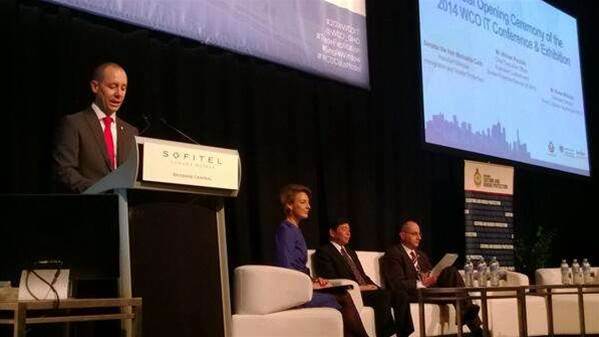Customs' new CIO Randall Brugeaud has acted on demands by frontline officers for better technologies, offering them two new mobile applications which promise to significantly cut down on administrative tasks.

Speaking at the Technology in Government summit this week, Brugeaud said the agency's customer-facing staff had not been well supported by technology and were struggling under manual processes.
One specific area of concern related to the agency's tourist refund scheme (TRS), which allows outgoing travellers to claim a refund of the goods and services tax (GST) and wine equalisation tax paid on certain goods.
The workflow of the TRS was, until recently, manually intensive, Brugeaud said. It required professionally qualified staff to act as data entry clerks, rather than focusing on their primary role of checking for proof of fraud.
Travellers were required to queue up to present their receipts to Customs staff, who would then enter all the customers travel and biographic details in order to process the refund.
“If somebody presents with a 100 receipts, it can take a little bit of time,” Brugeaud said.
“I watched this process running a few weeks ago in Melbourne airport. It’s very time consuming with not a lot of value being added by our officers.”
The agency had already developed a business case to provide a fully authenticated, self-service facility where travellers could process their own refunds within a certain threshold, and have the funds automatically deposited to their bank accounts. But that facility will take a while to implement, Brugeaud said.
So in the interim, Brugeaud’s team has developed an pnline and mobile application where travellers can enter their own receipt information, travel details and personal details, in order to generate a secure code to present to frontline staff.
"[The traveller] will have their smartphone with their QR code - or a print-out of their PDF which has the QR code on it - that they have completed at home. Officers then scan it and the app sucks all the data into the system automatically.”
The new approach has reduced the workload by 90 percent, Brugeaud said. He estimated that each claim now takes a 'conservative' 90 seconds as opposed to several minutes.
It also allows Customs officers to devote their time to the integrity of the process rather than just data entry, he said.
Inspector gadgets
Brugeaud has also set his sights on Customs air cargo inspections.
Drawing on the Australian Federal Police’s Interactive Constable on Patrol System (ICOPS), his team has developed a prototype application to offer real-time tasking to inspections officers.
The application - which draws data from several existing Customs systems - allows officers to enter inspection and task data into one location on a tablet device.
“We clearly need to look at the core infrastructure that underpins this,” he said. “But this provides an interim piece of relief. “
While the applications whave been welcomed by Customs frontline staff, Brugeaud said he was concerned about the large number of systems the agency is supporting - many of which are end of life or fast approaching it.
Coupled with an ongoing wrestle with fragmented data and pressure for cost reductions, Brugeaud said delivering faster innovations to please frontline staff could create headaches and "a whole new raft of legacy applications" in the long run.
Customs currently supports 7000 desktops and laptops, 1000 tablets and smartphones, 1000 servers and two mainframes across 40 locations - not to mention around 150 applications, many of which are mission critical.
“We have a couple of real challenges,” he said.
He plans to deliver incremental improvements that give his IT team breathing space to undertake more substantive changes, and also provide a 'skilled and engaged' IT workforce with opportunities to reach out with new ideas.
“We are all very busy, but we do need to somehow contribute and perform strongly. So creating that space is important for us," he said.
“We have lots of balls in the air at the moment.
Brugeaud will also spend the next year working with the Department of Immigration to create a new, combined organisational structure for IT in line with the Government’s directive to merge the two agencies, the deadline for which is scheduled for 1 July 2015.



_(22).jpg&h=140&w=231&c=1&s=0)
_(20).jpg&h=140&w=231&c=1&s=0)
.png&h=140&w=231&c=1&s=0)



_(26).jpg&w=100&c=1&s=0)

 iTnews Executive Retreat - Security Leaders Edition
iTnews Executive Retreat - Security Leaders Edition












_(1).jpg&h=140&w=231&c=1&s=0)



